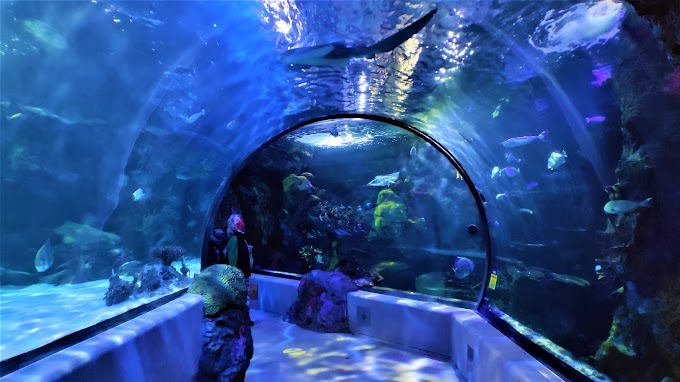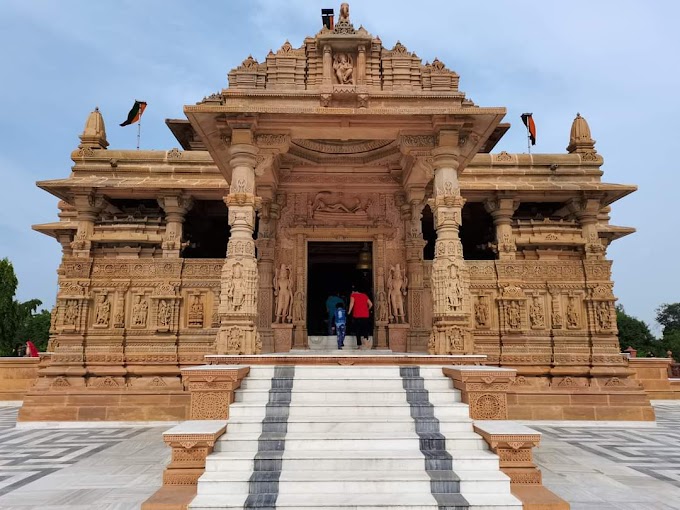The Kashi Vishwanath Temple is one of the most famous Hindu temples dedicated to Lord Shiva. It is located in Vishwanath Gali of Varanasi, Uttar Pradesh in India. The Temple stands on the western bank of the holy river Ganga, and is one of the twelve Jyotirlingas, or Jyotirlingams, the holiest of Shiva Temples. The main deity is known by the names Shri Vishwanath and Vishweshwara (IAST: Vishveshvara or Vishveshvur) literally meaning Lord of the Universe. Varanasi city was called Kashi in ancient times, and hence the temple is popularly called Kashi Vishwanath Temple. The etymology of the name Vishveshvara is Vishva: Universe, Ishvara: lord, one who has dominion.
The Temple has been referred to in Hindu scriptures for a very long time as a central part of worship in the Shaiva Philosophy. It had been demolished by many Muslim rulers many times, last time It was demolished by Aurangzeb, the sixth Mughal emperor who constructed the Gyanvapi Mosque on its site. The current structure was built on an adjacent site by the Maratha ruler, Ahilya Bai Holkar of Indore in the year 1780.
Since 1983, the temple has been managed by the government of Uttar Pradesh. During the religious occasion of Shivratri, Kashi Naresh (King of Kashi) is the chief officiating priest.
As per the Shiva Purana, once Brahma (the Hindu God of creation) and Vishnu (the Hindu God of Preservation) had an argument about who was supreme. To test them, Shiva pierced the three worlds as a huge endless pillar of light, the jyotirlinga. To determine who was mightier Vishnu took the form of a boar and sought out the bottom while Brahma took the form of a swan to fly to the pillar's top. Brahma out of arrogance lied that he had found out the end, offering a katuki flower as a witness. Vishnu modestly confessed to being unable to find the bottom. Shiva then took the form of the wrathful Bhairava, cut off Brahma's lying fifth head, and cursed Brahma that he would not be worshipped. Vishnu for his honesty would be worshiped as equal to Shiva with his own temples for all eternity. The jyotirlinga is an ancient axis Mundi symbol representing the supreme formless (nirguna) reality at the core of creation, out of which the form (saguna) of Shiva appears. The jyotirlinga shrines, thus are places where Shiva appeared as a fiery column of light. There are 64 forms of Shiva, not to be confused with Jyotirlingas. Each of the twelve jyotirlinga sites takes the name of the presiding deity - each considered a different manifestation of Shiva. At all these sites, the primary image is lingam representing the beginningless and endless Stambha pillar, symbolizing the infinite nature of Shiva. The twelve jyotirlingas are Somnath in Gujarat, Mallikarjuna at Srisailam in Andhra Pradesh, Mahakaleswar at Ujjain in Madhya Pradesh, Omkareshwar in Madhya Pradesh, Kedarnath in Uttarakhand, Bhimashankar in Maharashtra, Viswanath at Varanasi in Uttar Pradesh, Triambakeshwar in Maharashtra, Vaidyanath Jyotirlinga, Deogarh in Deoghar, Jharkhand, Nageswar at Dwarka in Gujarat, Rameshwar at Rameswaram in Tamil Nadu and Grishneshwar at Aurangabad in Maharashtra.
The Manikarnika Ghat on the banks of Ganges near the Kashi Vishwanath Temple is considered as a Shakti Peetha, a revered place of worship for the Shaktism sect. The Daksha Yaga, a Shaivite literature is considered as important literature which is the story about the origin of Shakti Peethas.
The temple complex consists of a series of smaller shrines, located in a small lane called the Vishwanatha Galli, near the river. The linga of the main deity at the shrine is 60 centimeters (24 in) tall and 90 centimeters (35 in) in circumference housed in a silver altar. The main temple is quadrangle and is surrounded by shrines of other gods. There are small temples for Kala Bhairava, Kartikeya, Avimukteshwara, Vishnu, Ganesha, Shani, Shiva, and Parvati in the complex.
There is a small well in the temple called the Jnana Vapi also spelled as Gyan Vapi (the wisdom well). The Jnana Vapi well sites to the north of the main temple and during the invasion by the Mughals the Jyotirlinga was hidden in the well to protect it at the time of the invasion. It is said that the main priest of the temple jumped in the well with the lingam in order to protect the Jyotirlinga from invaders.
There is a Sabha Griha or Congregation Hall leading to the inner Garbha Griha or Sanctum Sanctorum. The venerable Jyotirlinga is a dark brown colored stone that is enshrined in the Sanctum, placed on a silver platform. The structure of the Mandir is composed of three parts. The first compromise a spire on the temple. The second is a gold dome and the third is the gold spire atop the sanctum bearing a flag and a trident.
The Kashi Vishwanath temple receives around 3,000 visitors every day. On certain occasions, the numbers reach 1,000,000 and more. Noteworthy about the temple is the 15.5-meter-high gold spire and gold dome. There are three domes each made up of pure gold, supplied by Maharaja Ranjit Singh in 1835.
Currently, a corridor is being constructed between Kashi Vishwanath temple and Manikarnika Ghat, consisting of various amenities for pilgrims
Located on the banks of the holy Ganges, Varanasi is regarded among the holiest of the Hindu cities. The Kashi Vishwanath temple is widely recognized as one of the most important places of worship in the Hindu religion. Inside the Kashi Vishwanath Temple is the Jyotirlinga of Shiva, Vishveshvara, or Vishvanath. The Vishveshvara Jyotirlinga has a very special and unique significance in the spiritual history of India.
Many leading saints, including Adi Sankaracharya, Ramakrishna Paramhansa, Swami Vivekananda, Bamakhyapa, Goswami Tulsidas, Swami Dayananda Saraswati, Sathya Sai Baba, Yogiji Maharaj, Pramukh Swami Maharaj, Mahant Swami Maharaj, and Gurunanak have visited the site. A visit to the temple and a bath in the river Ganges is one of many methods believed to lead one on a path to Moksha (liberation). Thus, Hindus from all over the world try to visit the place at least once in their lifetime. There is also a tradition that one should give up at least one desire after a pilgrimage to the temple, and the pilgrimage would also include a visit to the temple at Rameswaram in Tamil Nadu in Southern India, where people take water samples of the Ganges to perform prayer at the temple and bring back sand from near that temple. Because of the immense popularity and holiness of the Kashi Vishwanath temple, hundreds of temples across India have been built in the same architectural style. Many legends record that the true devotee achieves freedom from death and saṃsāra by the worship of Shiva, Shiva's devotees on death being directly taken to his abode on Mount Kailash by his messengers and not to Yama. The superiority of Shiva and his victory over his own nature—Shiva is himself identified with death—is also stated. There is a popular belief that Shiva himself blows the mantra of salvation into the ears of people who die naturally at the Vishwanath temple.
It is one of the shrines of the Vaippu Sthalams sung by Tamil Saivite Nayanar Sambandar.
Address:
























0 Comments